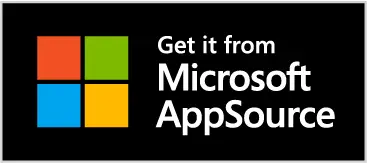In late 2016, the International Aerospace Quality Group (IAQG) released a new standard, AS9145, communicating the requirements for Advanced Product Quality Planning (APQP) and the Production Part Approval Process (PPAP) for the aviation, space, and defense industries. Since then, an increasing number of companies have begun looking for software solutions to help support the new requirements.
A web search for advanced product quality planning software solutions will return hundreds of results, which is enough to overwhelm anyone. With so many choices, you might be wondering, "How do I even begin comparing and contrasting offerings?" You can learn more about what is APQP Below are some example questions to ask when evaluating and selecting an APQP/PPAP solution.
1. How does your software manage and protect sensitive intellectual property (IP) and/or export-controlled data?
Elements such as design records and DFMEAs frequently include sensitive or proprietary information related to the design, and in some cases, may even be governed by Export Control regulations such as ITAR. The same applies for process flow diagrams, PFMEAs, control plans, and First Article Inspection Reports.
Therefore, it is very important to find out how access to deliverables is restricted within your own organization and, in the event the software solution electronically transmits data from one company to another, what controls are available to refine how external organizations access the data.
If you work with export-controlled data, it will be important to understand and define how each user is restricted from accessing data. Most companies prefer to see access control managed at a part and program level. You will also want to ask about capabilities such as jurisdiction and classification banners and how detailed access logs are stored and accessed.

2. What options are available when defining and fulfilling PPAP requirements?
If you are a manufacturer that serves multiple customers, then you know that there are nuances to the ways that each customer expects to see their deliverables formatted, and that some customers even have their own unique deliverables. When looking for a solution, you will want to ensure you can define the list of required elements based on the part, revision, and/or customer.
Additionally, if you are flowing down the APQP vs PPAP requirements to your suppliers, you will want to make sure you provide a tool that is flexible enough for your suppliers to use. Each supplier may have their own preferred tool and methodology for managing PPAP elements, so the last thing you want to do is mandate a restrictive solution. Instead, you will want to ensure the solution is compatible with each supplier's own methods, and allows them to simply upload evidence or electronically sign to confirm that they have completed the required elements.

3. How does your software track and manage changes?
Phases of the PPAP and APQP process frequently span several months in 5 APQP phases, particularly within the aerospace industry. So when evaluating a solution, it is important to understand how it manages and tracks changes. You should look for detailed logging capabilities that identify the specific users involved in updating requirements, compiling evidence, and approving specific APQP checklist elements.
Additionally, as you move into production, you might find that deliverables need to be updated. For example, you may identify a new process failure mode and need to update your process flow, your PFMEA, and your control plan. It is important that the software solution you select provides the ability to update required elements while also allowing for easy traceability between revisions.

In summary, by starting with a few specific, defined questions, you can easily narrow the choices available on the market. Any member of our Net-Inspect team would be happy to speak with you about our own APQP/PPAP solution. To reach a member of our team, call +1 425-233-6176, contact helpdesk@net-inspect.com, or click the Contact Us button below.

